Studying a film can be incredibly daunting. It can feel like you’ve been placed in uncharted waters! You may have noticed that it’s an entirely different beast compared to studying a book, a play, or a selection of poems. That’s because films come with a whole list of techniques that are unique to its form.
Regardless of whether you are studying English Standard, English Advanced, or Extension 1 or 2 level English, knowing these techniques and how to integrate them in your responses is crucial for high marks in an HSC exam.
That’s why this guide exists - we want to make the concept of film techniques a tiny bit less daunting, by breaking it down into digestible chunks with clear examples. If this interests you, keep reading!
How do I use film techniques?
First things first. Film techniques are there to support your point.
Many students fall into the trap of including as many techniques as they can find, and calling it a day. That’s a poorly written response.
But here’s the thing. Your teachers and HSC markers aren’t looking for a comprehensive list of film techniques (if they were, they could just read this article). They’re primarily assessing one thing - can you respond to their question in an insightful way, using evidence-backed points? Therefore, instead of name-dropping down every technique under the sun, focus on expressing your point. Break it down as follows:
- What is my point? What’s my answer in relation to what they’ve asked me?
- Prove it. Is there enough evidence from my prescribed texts to support my answer? Consider things like:
- What techniques were used in the film?
- Why would the composer have used this technique?
TLDR, film techniques are meant to support your arguments and ideas.
Each technique you choose to analyse should add value to your answer, otherwise, there’s no point adding it in. You should still be following the rules of PETAL, focusing on pulling 3-4 high-quality techniques per paragraph, using it to back up your argument, and frequently adding links back to the question. So really, the way you write your response doesn’t change just because we’re talking about a film.
*PS: For more advice on how to level up your analysis, integrate textual evidence and structure your responses cohesively, check out this “Ultimate Guide to Literary Techniques”. *
A comprehensive list of film techniques to know
The more film techniques you know, the easier it is to pick out the high-quality ones that support your ideas. So, to help you navigate this area of your English studies, we have compiled some examples of film techniques that are commonly used. We’ve also included several examples and case studies, so you can see how it all works when analysing your prescribed films for HSC English.
Keep in mind that this is not an exhaustive list. You may want to research more, and if your teacher or friend mentions another, take it in stride and add it to the list!
Angle
Low Angle
A low-angle shot refers to when the camera is positioned below the subject, pointing upwards. It is often used by directors to make characters look larger and hence, superior or more frightening.
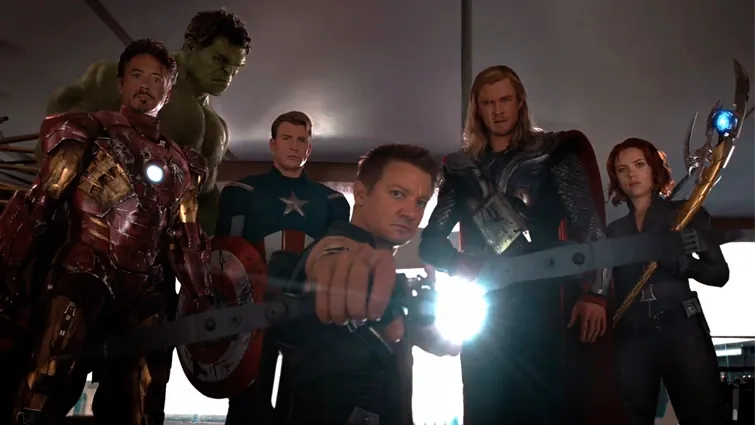


Eye-level/Mid-Shot
A mid-shot is usually used to place the viewer and the character on the same level. It is a shot that allows you to assess their facial expressions, and subsequently emotions.



High Angle Shot
Conversely, a high-angle shot refers to when the camera is positioned above the subject, making them seem smaller, inferior or not intimidating.



Over-the-shoulder Shot
An over-the-shoulder shot refers to when the camera is positioned over someone’s shoulder. It is usually used in scenes when two characters are conversing. It allows a particular character to be fully in frame, whilst situating the audience from the perspective of another character.
It can be used to create a sense of intimacy and establish a sense of relationship between two characters. It can also be used to give us a POV from another character.
For example, let’s look at this use of an over-the-shoulder shot in Stephen Daldry’s ‘The Hours’. In this scene, we are watching an exchange between the characters Richard and Clarissa. Through this shot, Daldry invites audiences to take Clarissa’s point of view. There is a stronger focus on Richard and his emotions.
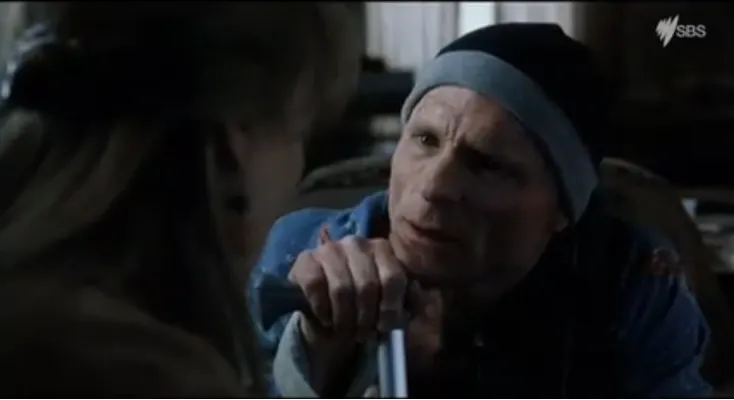


Colour and hue
This refers to the colour palette of film or scene, and is a pivotal way for directors to subtly convey meaning within certain scenes.
As we know, different colours have different connotations. Red can convey love, anger or passion. Green evokes tranquillity or jealousy, depending on the context.
A great example is the colour scheme that is distinctive of Wes Anderson films. Think of the stereotypical pastel, colour scheme featured. What emotions/feelings do they evoke in audiences? How does this support or contrast the themes he discusses?
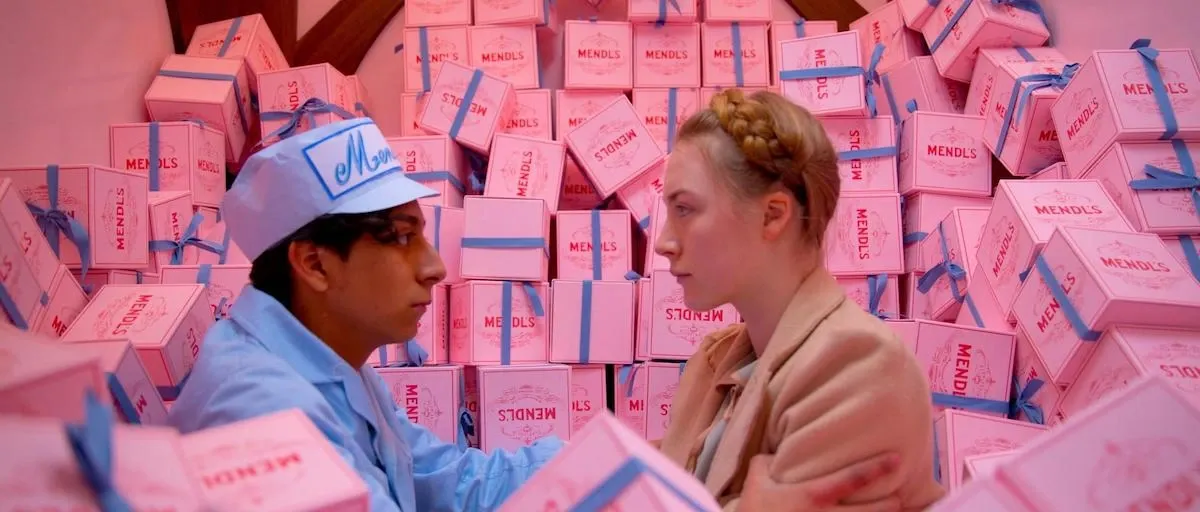


Costuming
Costuming refers to the general make-up of characters; their costumes, the hairstyles, the make-up, and their accessories.
There is so much that can be inferred through the way characters are presented, and the nature of their dress. Obviously, we can infer their status and background. However, the way an individual is dressed can also reflect more subtle aspects, such as their personality and emotions.
Think of the costuming in the Hunger Games. The way members of the Capitol are dressed, vs. the way members of District 12 are presented. For example, the bright, theatrical style of Effie Trinket, is placed directly in comparison with Katniss Everdeen’s dreary grey dress. This can be interpreted as a means of highlighting their differences in status and personality.
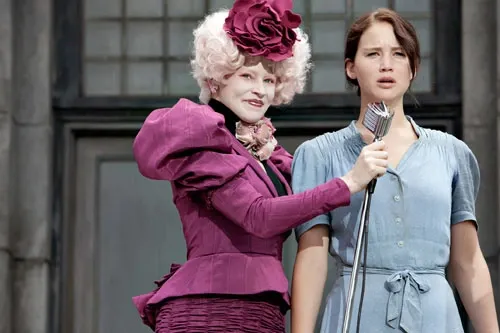


Lighting
Lighting in film refers to how dark or light a scene is. It is used to establish a particular atmosphere or feel within a scene.
Is the light dim? Harsh? Is a particular thing spotlighted?
For instance, in Jane Campion’s film, ‘Bright Star’, lighting is used in a scene with Fanny and Keats to convey meaning within their relationship. The lighting used in the scene of them intertwined on the bed, is subdued and dim, but grows brighter as they talk about their future.



Genre
Genre simply refers to the type/family of film, within which your prescribed text falls. Common genres include romance, science fiction, action, comedy etc.
When analysing your prescribed text, think about why the composer may have chosen to work within a particular genre. How does the technique you are analysing relate or emphasise the genre of the film? What are the conventions within that particular genre? For example, in romantic comedies (i.e. “romcoms”), it is common to have close-up and over-the-shoulder shots of the leads, to illustrate a sense of intimacy.
Another thing to consider; does your film stretch the boundaries of its genre? How closely does it follow the characteristics of its specific genre? Does this composer subvert the conventions of the genre to prove a point?
Mise en scène
Mise en scène refers to how things in a film are set up and established. Don’t look specifically at particular objects and props, but also consider the larger setting of a scene. How does everything fit together to convey a narrative?
Let’s look at the use of mise-en-scene in Stephen Daldry’s, ‘The Hours’. The use of mise en scène highlights how the environment of Clarissa’s kitchen is cluttered and messy with food and kitchen objects. This mirrors Clarissa’s distress and anxiety in this scene. Messy space equals messy mind, right?
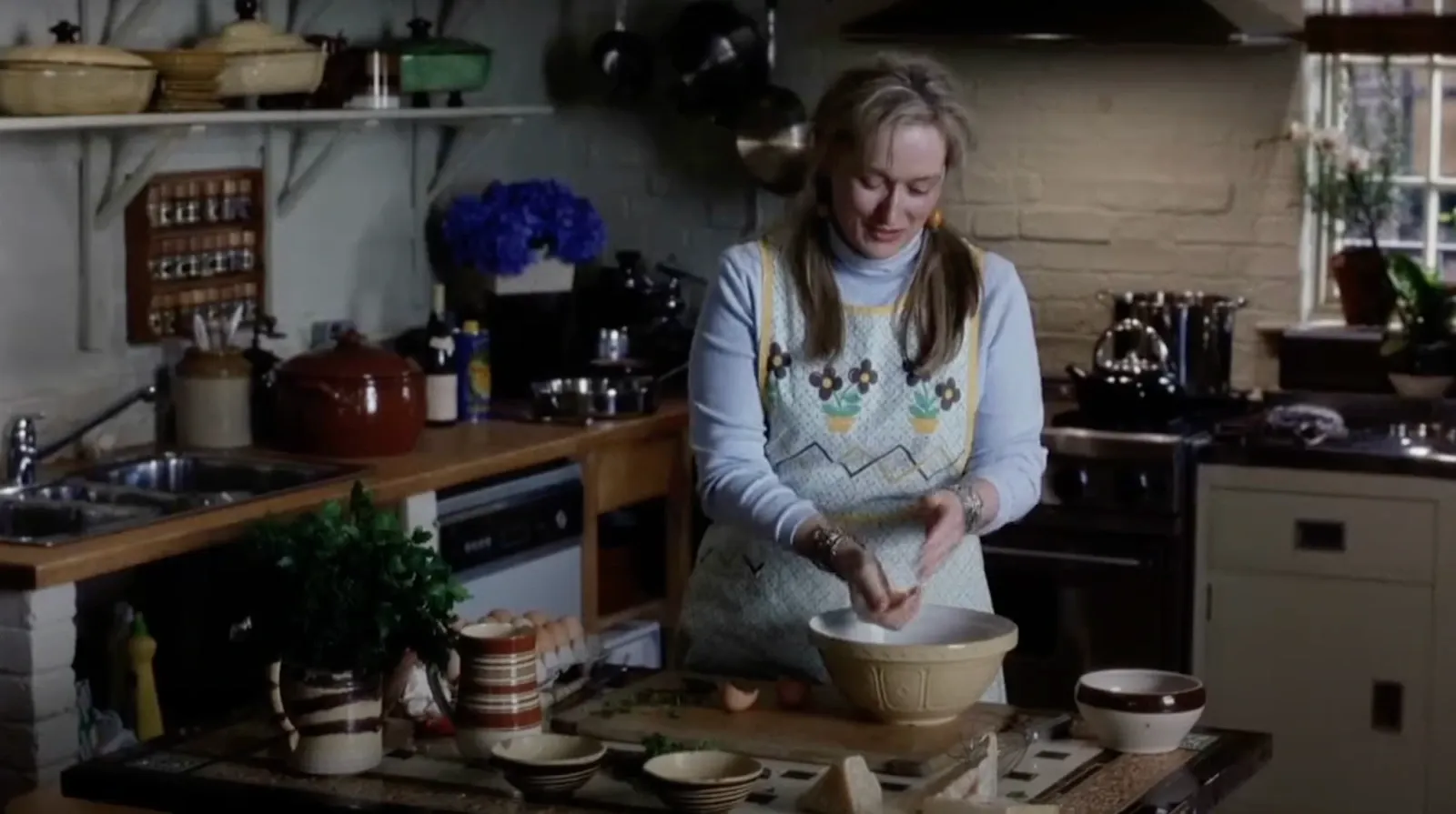


Motif
Whilst this is a popular literary technique, motifs are also heavily used in films! However, a motif does not necessarily have to be a particular object/thing, it can also be music, a particular sound, or a type of shot that is used frequently by the director.
For example, in Bright Star, Campion uses the motif of a butterfly to highlight Keats’ impermanence and permanence, and his desire for immortality.



Montage
Montages are various clips placed together, to convey a story in a shorter period of time. Sometimes directors want to tell a story that may span across a few months or years - however they may not have the time frame to do so. Using a montage allows them to condense this story into something digestible and fast-paced for viewers.
An example of a montage is in the iconic 1976 film, ‘Rocky’. The main character is training for an upcoming much-anticipated boxing match, and the progression of his training over the course of several weeks, is cleverly shown using a montage.
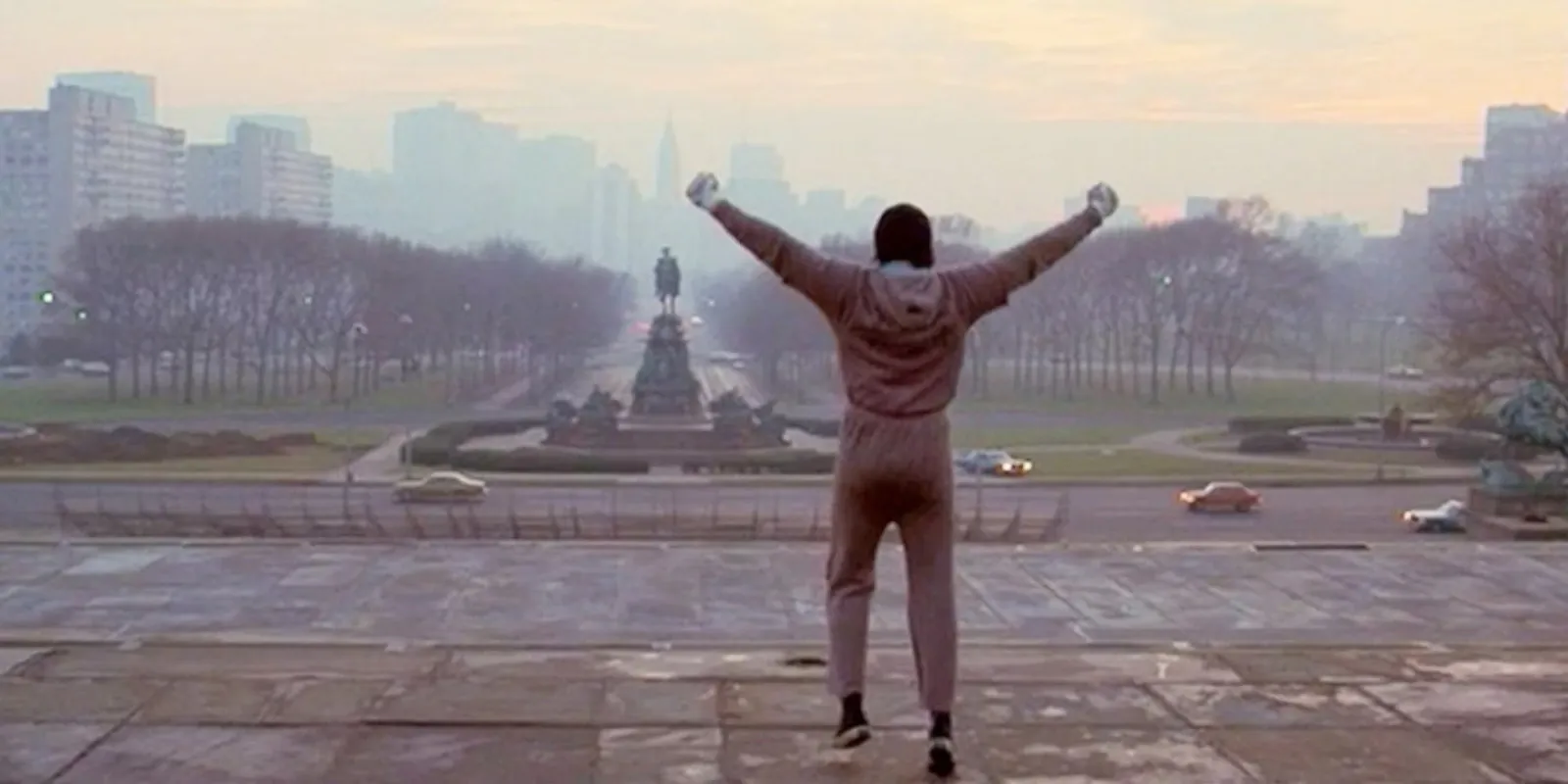


Shot
A shot refers to the distance of the camera relative to the characters or objects within a scene.
Close-up shot
A close-up shot, is a shot allowing you to see a character’s face, up close. It enables you to follow their facial expressions, and therefore understand their feelings in the moment. Unlike books or poems, we cannot understand the inner thoughts of a character, unless there is dialogue. So we rely on close-up shots of their faces to infer their thoughts and feelings.
For example, in John Keats’ film, ‘Bright Star’, a close-up shot is used in a scene of Fanny and Keats on a couch. This close up of their interlocking hands, is reflective of their love and connection for one another.
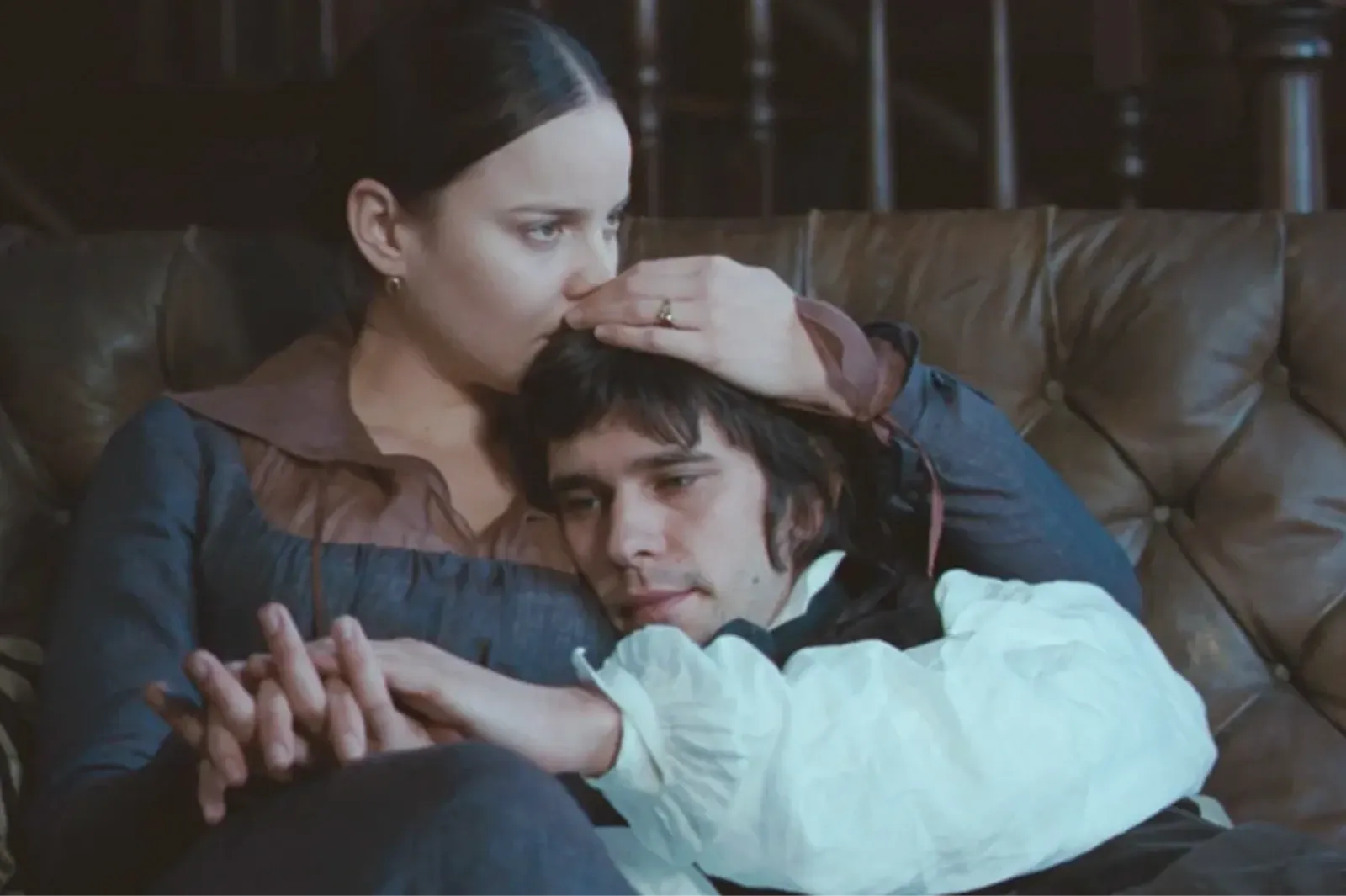


Long-shot
A long shot allows us to see a person’s entire body. This allows us to see their body language, and how they are positioned against other characters or environments.



One-shot
One-shot is a term that can be used to refer to both scenes, and films. It can refer to scenes that are filmed in one, singular take, as well as films, which are filmed in one consecutive shot.
Think of the use of a ‘one-shot’ in the film, 1917. The film itself has been made to look like it was filmed in one, continuous shot. This enhances the stress/anxiety the film evokes amongst its audiences, as viewers are deprived of a reprieve from the tension of the film. There is no cut or transition, to a moment undisturbed. Viewers are left on the edge of their seat for the entirety of the film.
Have a look at the video linked here, which breaks down the use of ‘one-shot’ in 1917.
Panning Shot
This refers to a shot which follows the movement of characters on screen. This type of shot usually moves across the screen, from left to right. It is a smooth and subtle shot, and often does not distinctly draw the audience’s attention. This makes it seamless, and allows the audience to feel more immersed within the scene.
Slow pans can demonstrate the grandeur of a certain location, or create a level of tension. Quick pans can be used to create humour. Think of the use of short pans within sitcoms, like Modern Family. Through this, directors can showcase the reactions and facial expressions of different characters to evoke comedic emotion.
Tracking shot
This technique also follows the movement of characters on screen, but greater movement is involved. Whilst panning shots follow the movement of characters from left to right, tracking shots move with the character. These shots can be filmed next to a character, or behind/in-front of a character.
Think of the tracking shot used in the 2005 adaptation of Pride and Prejudice, linked here. This is a ‘long’ tracking shot, and follows the movement of various characters, as they move throughout a ballroom.
![]()
![]()
![]()
Zoom
The use of zoom in film, is when things in a scene become bigger or larger. It is a pretty self explanatory technique, so let’s jump in and analyse an example!
A common use of zoom is in comedic television shows. Think again of sit-coms like The Office. Take a note of the pacing of the zoom in/outs. Slow zoom outs are used to highlight who is in the scene. Slow zoom-ins are used to showcase the reactions of a particular character. Fast zoom-ins are used to create comedic effect. As they’re often layered with the witty dialogue/remarks of another character, we get to see how particular characters react in response to these remarks, in the moment.
Sound
Sound refers to the audio heard when watching films.
Diegetic Sound
Diegetic sound refers to any sound that is normal in the context of the film. If you are watching a scene featuring a car chase, diegetic sound would be the revving of the engines, the whoosh of the wind, or the skidding of the car on the pavement.
Let’s, for example, briefly analyse the scene between Virginia Woolf and her husband in the film, The Hours. Within this scene, the audience can only hear the diegetic sounds of the train and wind in the background. This emphasises the tension within the scene; allowing the audience to focus on the dialogue between the two characters.
Non-Diegetic
Conversely, non-diegetic sound is sound that would not occur naturally in the scene of a film. This would include sounds such as like music, or voiceovers.
For example, non-diegetic sound (music) is used in the opening scene of The Hours. This is used to set the scene of the film - introducing the characters, the environment etc.
Music
Music is a great technique to add to the ambiance of a film. It can increase suspense, emphasise the romantic nature of a scene, or add to the melancholy of a scene.
Think of the iconic score in the Harry Potter films - how it is able to express the whimsicality of the wizarding world we all know and love?
Dialogue
Dialogue refers to exchanges between characters. These can include long conversations, or simply brief exchanges.
Whilst you’reanalysing a film, don’t shy away from looking deeply into the script/words of the characters! Dialogue is just as important to analyse as lighting or other stylistic features.
For example, in Stephen Daldry’s film, ‘The Hours’, dialogue is used between the characters of Laura and her husband. The dissonance between her actions and her dialogue, as she tells her husband that she is ‘brushing her teeth’ whilst she infact remains seated on the toilet seat, is representative of the dissonance in her feelings towards herself and her marital duties. There is a sense of falsehood to their relationship; a pretence which she must maintain when she is with her husband.
Voiceover
Voiceovers refer to a voice layered on top of scenes. They can be used to narrate certain scenes, provide comedic relief, or provide viewers with greater context of a certain scenario.
Think of the voiceover of Nick Carraway in The Great Gatsby. What is the directorial intention of having this voiceover in the introduction of the film? Can this be argued to effectively ‘set the scene’ or introduce the audience to the film and its characters?
Conclusion
A lot of HSC students really struggle with studying films, purely because they’re used to analysing texts of written form, such as short stories, poems, plays, and so on. However, being able to analyse a film is a really cool skill to have. You might even find yourself analysing films the next time you’re in a cinema!
Hopefully, this article gave you a nice overview and helped you develop a stronger understanding of the different types of film techniques and how they should be used in HSC English. With this knowledge under your belt, you’ll be able to break down your prescribed texts, and be able to do some pretty cool analysis.
Need more HSC English guides? Read State Ranker Band 6 HSC English Advanced essays, sample answers from an actual HSC English Advanced examination paper, and other quality resources:
- Guide on How to Consistently Write 20/20 English Advanced Essays
- Common Module Exemplar Essay: Texts and Human Experiences
- Module A - Exemplar Essay
- Module B - Exemplar Essay
If you are interested in learning from our teachers in our HSC English Advanced course, or other subjects, take a three-week trial with us today, obligation free. Enquire here.







